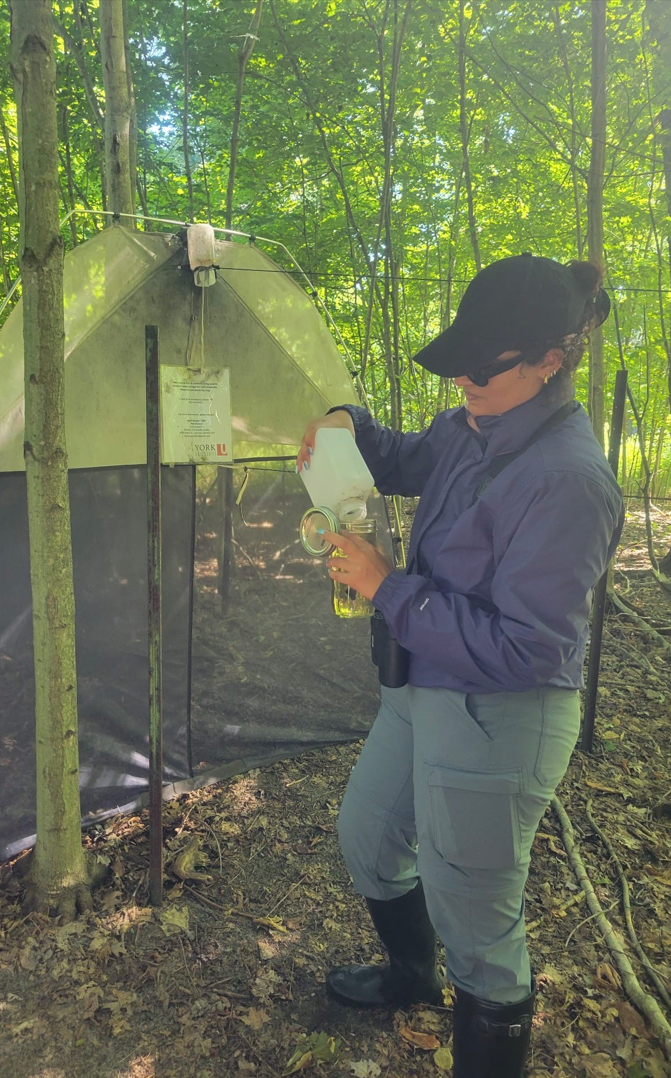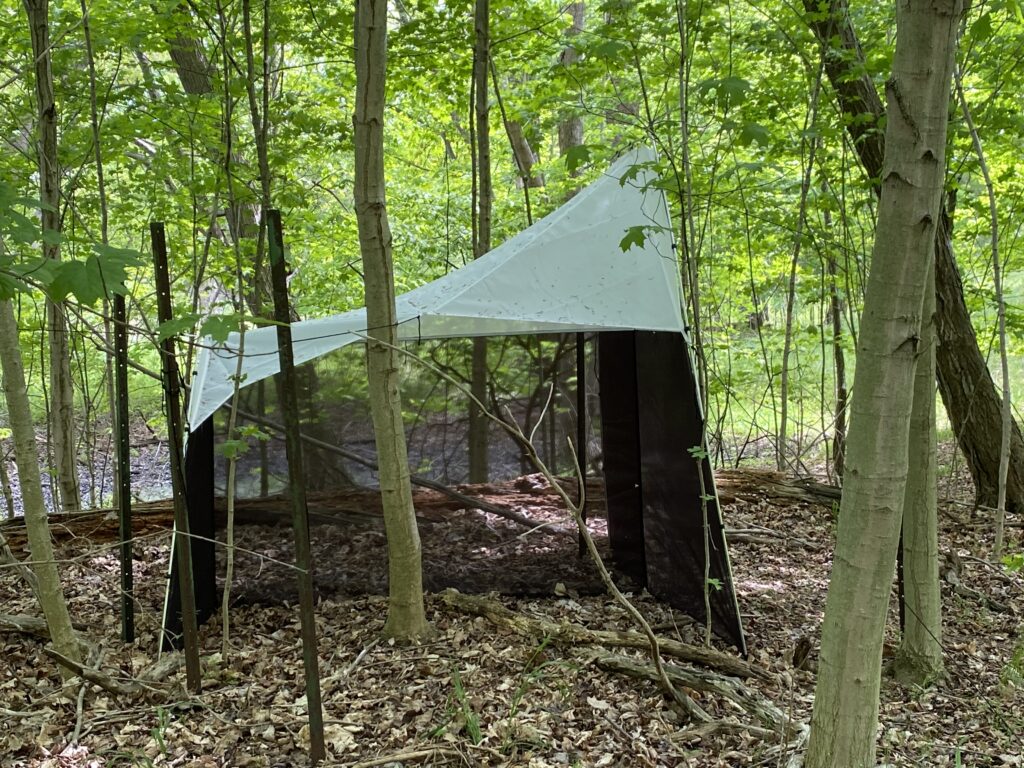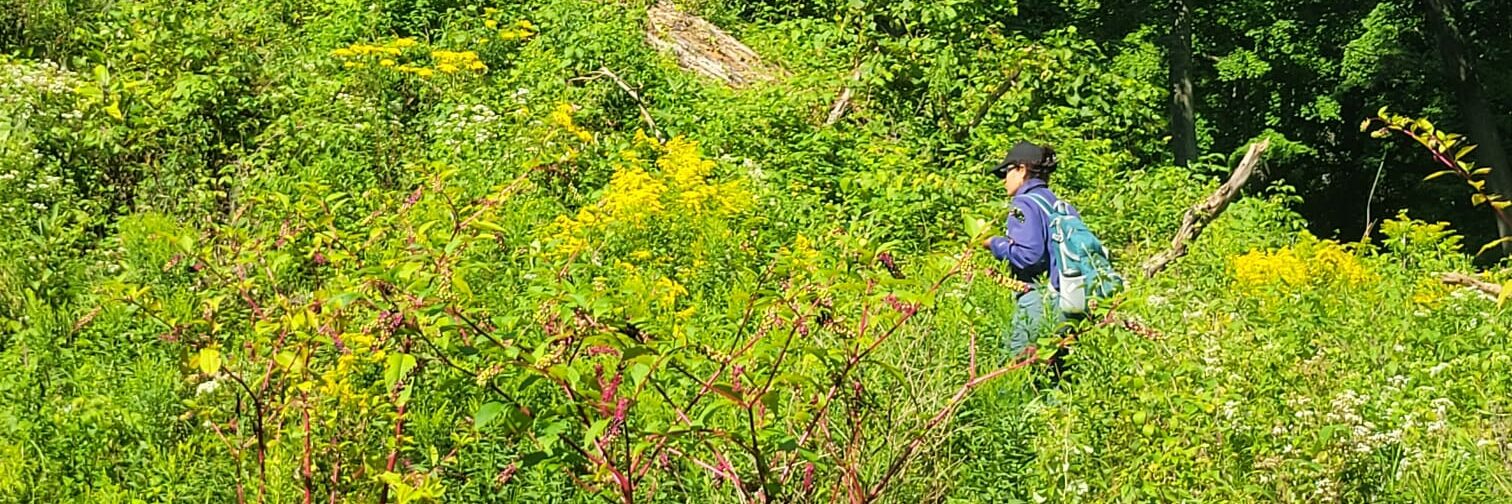By Corey Allen, senior manager, research communications
Academic research is often perceived to involve a lot of books and library visits, but Hadil Elsayed’s PhD work studying insects at York University has involved choppy boat rides, off-road all-terrain vehicle (ATV) adventures and one particularly nasty trek through a swamp.

“I joke that my PhD defence will include a graph that shows the number of cuts and bruises I’ve had to endure for my research,” says the budding entomologist, who is in the fourth year of her PhD in the Department of Biology.
Jokes aside, Elsayed’s research into the effects of climate change on insects is no laughing matter. In fact, her work is adding to an increasing number of studies that reveal insects are disappearing. It’s a troubling phenomenon dubbed “the insect apocalypse.”
Current scientific evidence suggests insects across various species and regions are in global decline and are decreasing in terms of population, biomass and diversity. This has serious consequences for the health of our ecosystems, as insects are crucial for pest control, soil quality and pollination, or plant reproduction. Insects travel between different plants, helping them grow by leaving behind pollen grains. These plants can then be harvested as an energy source for humans and other living organisms, including birds that depend on insects for food.


“Many of these decline studies are coming out of Europe, so my research explores to what extent we are seeing this same trend here in Canada,” says Elsayed, whose work is supervised by leading conservation scientist Sheila Colla, an associate professor in the Faculty of Environmental & Urban Change. “As far as I know, research into biodiversity loss within protected areas at this level has not yet taken place in this country or in North America.”
Elsayed’s research spans 13 sites, primarily in the Long Point Biosphere Reserve three hours southwest from Toronto, off the shores of Lake Erie. It’s an ecologically significant area, made up of several distinct natural habitats including woodlands, marshes, beaches, meadows and sand dunes, among others. Protected by the United Nations Educational, Scientific & Cultural Organization, the area is home to a wide range of plants and animals, including many aquatic birds and species at risk.
To collect all the insect specimens for study, Elsayed used malaise traps, tent-like structures that are set up in the direction of the wind to catch insects flying upwards into jars of ethanol. Elsayed collected hundreds of samples biweekly, or sometimes weekly, in the summery months of May through August.
Setting up all the traps in the right places and monitoring them means Elsayed often had to brave the wilderness and all its elements, including tick-infested terrain.
“I would have to stop every two minutes to pick ticks off me or shoo away all the mosquitoes,” she says. “I complained a lot while I was out there, but it’ll be worth it if it means I can help protect biodiversity and make a meaningful contribution to the field of entomology.”

With help from a guide from the Long Point Bird Observatory, Elsayed travelled to some sites that are only accessible by going off-trail – by ATV, by boat or by bushwhacking. The demanding task of collecting samples also entailed a month-long stint living alone in a cabin, where the only visitors Elsayed entertained were some rather unwelcome cockroaches.
Back at the lab, Elsayed processes her samples and sorts, weighs and analyzes hundreds of insects. Her research specifically focuses on the insects that live in protected areas, like Long Point, which should be safer from environmental stressors than insects found in urban ecosystems or cities – in theory.
But some of Elsayed’s early findings show these protected areas are also suffering, experiencing a decline of up to 200 grams in biomass. This translates to a loss of hundreds of thousands of insects. These findings are possible because Elsayed can compare data collected from the same sites in the early 1990s by the Canadian Wildlife Service against the data she has gathered 30 years later.
“Preliminary results indicate that climate change is a factor in insect decline, even in protected areas, and various climate stressors are behind their disappearance,” explains Elsayed. “For one group of insects, the main driver for their decline appears to be a decrease in rainfall. For another, it’s linked to an increase in temperature.”
Recently, Elsayed presented parts of her work at an annual conference held by the Entomological Society of America, with over 3,600 attendees. She was awarded first place in the Student Competition for the President’s Prize, recognizing her efforts to advance climate change research.
With her strenuous field work completed, Elsayed is currently working on writing her dissertation, with a projected PhD completion date in early 2025.
Her work is funded by York University, the Natural Sciences & Engineering Research Council of Canada, and the Entomological Society of Canada.


